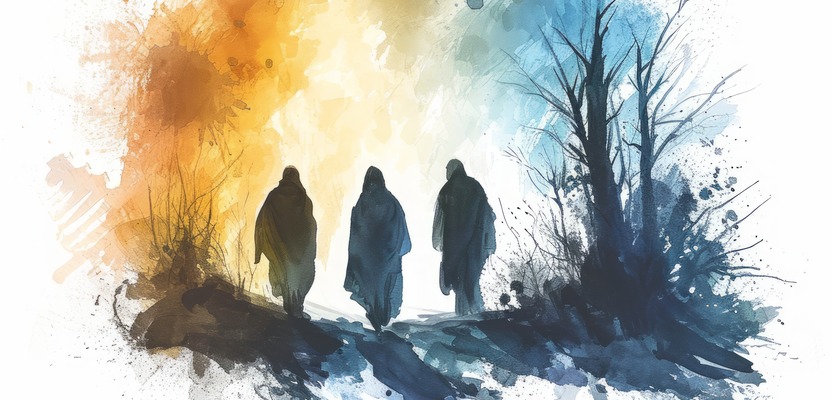
A platform that encourages healthy conversation, spiritual support, growth and fellowship

NOLACatholic Parenting Podcast
A natural progression of our weekly column in the Clarion Herald and blog

The best in Catholic news and inspiration - wherever you are!
‘A ghost does not have flesh and bones’
-

By Fr. Larry Gillick, S.J.
Creighton University
Peter and John are heading for prayer in the temple of Jerusalem. It is the wonder-place of God’s presence. Each day, a man who has been crippled is placed near the Beautiful Gate to beg from the people going to pray in that same temple. When Peter and John pass the man, he calls out for alms. They reply that they have neither silver nor gold, but the riches they do have, they share with the man. They raise him in the name of Jesus, and the man stands up praising God and jumps with joy. The people come running to see this marvel, and it is to them that Peter addresses words which we hear in the First Reading.The miracle becomes a launching pad for Peter to remind his Jewish listeners that the God of their ancient fathers is the God who has glorified Jesus, whom their leaders have handed over to death. That God has raised Jesus, and Peter and John are witnesses. This Jesus has fulfilled the prophets’ writings on how this Christ would suffer. Peter invites them then to repent and they, too, will be healed as is this once-crippled person.
In Luke’s Gospel today, the two disciples whom Jesus met on their way from Jerusalem to Emmaus and to whom Jesus revealed himself in the breaking of bread after reviewing their Scriptures, now are pictured back in Jerusalem. They are witnessing this great event, and almost as a “visual aid,” Jesus appears in their midst.
As with his appearance to the two men on their way to Emmaus, Jesus presides at a kind of eucharistic liturgy himself. He shows them himself to be risen and quite in his own body. He eats something and then again breaks into the minds by breaking open the scriptures, which predict his suffering, death and resurrection.
Then there is the missioning; they are prepared to extend his resurrection to others by preaching repentance for the forgiveness of sins. Today’s readings help explain some important features of this communal celebration of the Lord’s death and resurrection.
Whose liturgy am I discussing? The appearances of Jesus after his rising were all formative of community. The only single person whom he met – Mary Magdala – he sent to fetch the others. So, the liturgy of the Eucharist doesn’t belong to anybody exactly or exclusively. The “gathered” or “called” hold the liturgy in common, but Jesus holds on to it as well. He presents himself right in the midst of strong, medium and weak believers.
Thomas was not the only “doubter,” and in today’s Gospel, we see some of the “gathered” terrified and “incredulous.”
There is the “fish,” of course. A fish was then and still is a symbol of Christ in the very early church. They must have been eating some when he appeared and had a little himself. He was the “real presence” for them, and they, too, recognized him in the eating of the fish.
Two affirmations are present: the “gathered” and the “real presence.” Jesus reviews the Scriptures with them that announce his truth, and they then recognize him in the breaking of the word. The liturgy seems to be private. It belongs exclusively to those present. When Jesus made himself present and real, he then expanded their vision, their lives.
“Out you go,” he would say in one way or other.




